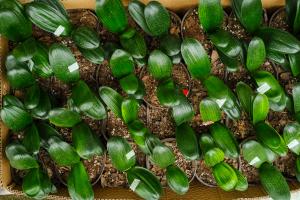How to Plant Water Lilies in a Natural Pond
Water lilies are beautiful, blooming aquatic plants that add a touch of color and elegance to any natural pond. However, planting them can be a little bit tricky if you're new to the process. In this article, we'll guide you through the steps you need to follow to plant water lilies in your natural pond.
Step 1: Choose the Right Variety of Water Lilies
When it comes to selecting water lilies for your natural pond, you'll want to choose the right variety. Be sure to consider the size and depth of your pond, as well as the conditions in terms of exposure to sunlight and water temperature. Some water lilies prefer shallower water, while others need deeper water. Research the different types of water lilies available to ensure you choose the best variety for your pond.
Step 2: Preparing the Planting Area
Before you even think about planting your water lilies, you'll need to prepare the planting area. You want to start by removing any weeds or plants from the area where you'll be planting. Once you've cleared the area, you'll need to dig a hole that is deep enough to hold the plant with its roots just beneath the soil. The size of the hole will depend on the size of the plant you're planting. You'll want to make sure the hole is big enough to accommodate the plant, but not too wide, so it fits snugly.
Step 3: Planting the Water Lily
Once you've prepared the planting area, it's time to plant the water lily. You'll want to carefully place the water lily in the hole, making sure that the roots are spread out and that they are in good contact with the soil. Gently press the soil down around the plant to keep it secure. You'll want to make sure that the plant is slightly above the soil level, so it is not too deep. A good rule of thumb is to keep the crown (the point where the roots meet the base of the plant) around 2-3 inches above the soil level.
Step 4: Adding Fertilizer
Fertilizing your water lilies can help them grow strong and healthy. You'll want to use a water-soluble fertilizer that is designed for aquatic plants. The best time to fertilize your water lilies is in the early spring, before they start to grow. You can also fertilize them during the summer months to provide them with added nutrition.
Step 5: Caring for Your Water Lilies
Once you've planted your water lilies, you'll want to care for them to ensure they thrive. This means keeping the water clear of debris and algae and maintaining appropriate water levels. You'll also want to monitor the water temperature to ensure it stays within a healthy range for your plants. Regularly maintenance can help your water lilies grow strong and beautiful, and provide a stunning addition to your natural pond.
Conclusion
Planting water lilies in a natural pond takes time, patience, and careful attention to detail. But with the right variety of plants, proper preparation, and regular maintenance, you can enjoy the beauty and elegance of these stunning aquatic plants for years to come. Remember to carefully select the right variety of water lilies for your pond, prepare the planting area correctly, and provide regular care and maintenance to help them thrive.

 how many times do yo...
how many times do yo... how many planted tre...
how many planted tre... how many pine trees ...
how many pine trees ... how many pecan trees...
how many pecan trees... how many plants comp...
how many plants comp... how many plants can ...
how many plants can ... how many plants and ...
how many plants and ... how many pepper plan...
how many pepper plan...





























